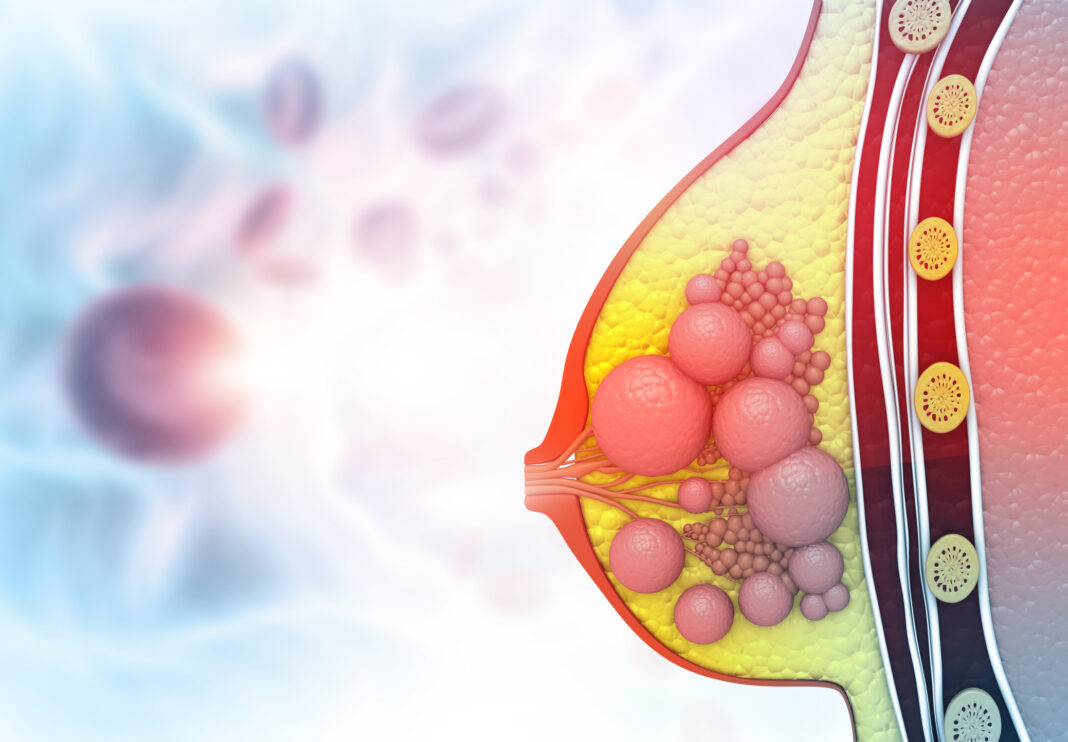As this is Breast Cancer Awareness Month, the latest researcher data must be shared with as broad an audience as possible. Particularly since the American Cancer Society estimates that 284,200 women will be newly diagnosed with breast cancer in 2021, and 43,600 will die of the disease—the second highest cause of cancer death in women. Thankfully, new research led by investigators at the University of Notre Dame examines how the extracellular matrix (ECM) can trigger invasive cancer-related genes—providing valuable insights into cancer initiation and progression.
Findings from the new study were published recently in Advanced Science through an article titled, “Aged Breast Extracellular Matrix Drives Mammary Epithelial Cells to an Invasive and Cancer-Like Phenotype.”
“This is the first time we’ve been able to show direct evidence that the aging ECM itself is changing the phenotype of normal epithelial cells,” explained senior study investigator Pinar Zorlutuna, PhD, a professor of engineering at Notre Dame. “Clinical data shows that aging is a big risk factor for breast cancer, and we wanted to investigate why that is. Cellular aging has been explored, but what we didn’t know was what effect aging had on the extracellular matrix.”
Zorlutuna and her team studied the ECM tissue in healthy younger and older mouse models, seeding the matrixes with normal mammary epithelial cells and cancerous cells.
“This study shows that the aging breast ECM alone is sufficient to drive normal human mammary epithelial cells (KTB21) to a more invasive and cancer-like phenotype while promoting motility and invasiveness in MDA-MB-231 cells,” the authors wrote. “Decellularized breast matrix from aged mice leads to loss of E-cadherin membrane localization in KTB21 cells, increased cell motility and invasion, and increased production of inflammatory cytokines and cancer-related proteins. In addition, the aged matrix upregulates cancer-related genes in KTB21 cells and enriches a cell subpopulation highly expressing epithelial-mesenchymal transition-related genes. Lysyl oxidase knockdown reverts the aged matrix-induced changes to the young levels—it relocalizes E-cadherin to the cell membrane, and reduces cell motility, invasion, and cytokine production.”
The research team found changes in the biochemical composition, structure, and stiffness of the aged ECM. As the tissue ages, protein levels and collagen production decrease, and collagen fibers become thinner but curlier and form a denser “mesh.” Lack of collagen production can leave the integrity of the ECM vulnerable to invasive tumor cells, while thinner and curlier fibers may contribute to the metastasis of cancer cells.
“The normal epithelial cells in the aged matrix started to express more invasiveness-related genes associated with breast cancer,” Zorlutuna remarked. “And we identified the gene critical to this transition called lysyl oxidase (LOX).”
Normal epithelial cells grown on aged ECMs showed an elevated expression of LOX, preventing the formation of healthy cellular structures. In the models containing cancer cells, those cells became more motile and invasive. When LOX was inhibited, the study showed the original phenotype of the cells could be rescued—meaning the epithelial cells returned to normal and were less motile as they were in young and healthy ECM models.
The results could help scientists understand cell migration and invasion in aged tissues and inform new methods for prognosis, diagnosis, and prevention of breast cancer. Zorlutuna said she and her team would continue to study the ECM as it relates to cancer initiation and progression.


